What Animals
May See
Some thoughts on
Visual Perception - Created by Alexis Booth
Though we might like to think that animals see
the world with the same vivid colors and definition as human beings, perhaps just from
different angles and perspectives, the truth is that vision differs greatly among animal
species.
Animals process visual information in distinct
ways, largely a direct result of the specifics of their visual equipment. An animal's eyel
and the arrangement of its various structures determine the basis of its visual
world. Although all vertebrates utilize an eye that takes in images by
focusing on an object in a camera-like manner, many have different eye shapes, and some do
not possess all of the same structures (such as cones, which distinguish colors). Of
course, some animals have receptors that pick up visual stimuli that humans cannot
perceive; birds, for example, can see ultraviolet light, and as a result observe a variety
of visual patterns which humans can only view through the use of additional external
filters.
Basic visual capabilities are not all that
matter when considering animal vision. Though the raw information is important in
that it provides a basis for any further brain processing, once a picture is formed it
moves on to the rest of the brain and is compiled with all the other sensory information
that an animal has taken in. The end product is a perceived view of the
surrounding world, otherwise known as an ümvelt.
Here are a few visions of how animals might see
the world based on what we know about their visual systems.
Prairie Dogs

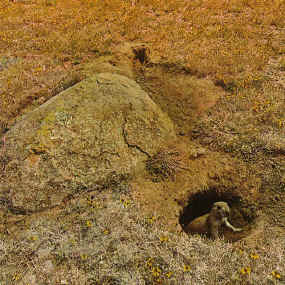
Though humans can see the entire visible light spectrum and would be
able to appreciate the rich greens of the grass in the meadow on the left, prairie dogs
and squirrels are red/green color blind, and only perceive the blues, yellows, and greys
of the landscape.
Sharks
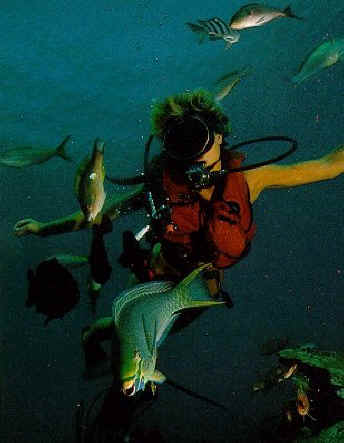
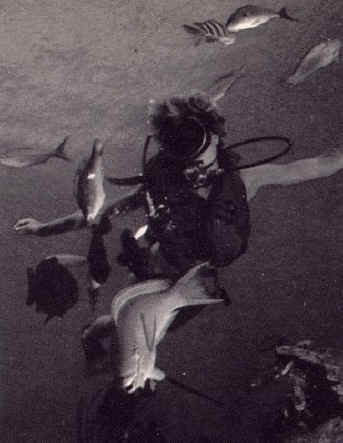
Sharks do not possess the same photoreceptors as humans.
They have few retinal cones, and as a result, most have no or limited color vision. They have much larger rod receptors (which pick up light), with fewer numbers of
them, so their vision is perhaps more sensitive, but less acute, than ours.
 See
NOVA's Shark Attack!
page: an interactive lesson in how sharks use their sophisticated sensory system to hunt
prey
See
NOVA's Shark Attack!
page: an interactive lesson in how sharks use their sophisticated sensory system to hunt
prey
 Visit Ocearch Global
Shark Tracker to see real time movements of Great White
Sharks around the world
Visit Ocearch Global
Shark Tracker to see real time movements of Great White
Sharks around the world
Fish
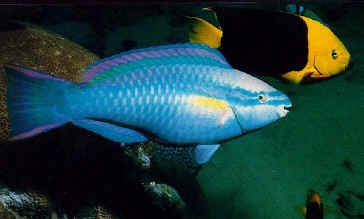
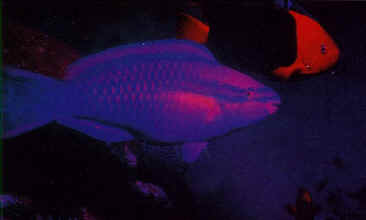
Sea Turtles have a special feature which perhaps evolved to help them
see on the dark sea floor; their individual photoreceptors contain red oil droplets which
obstruct shorter light wavelengths. As a result, they can easily pick up reds and
oranges and yellows, but cannot really perceive any of the longer light wavelengths such
as green or blue or violet.
Bees
 Visit Andrew Giger's unique
B-EYE site.
See the world from a bee's perspective!
Visit Andrew Giger's unique
B-EYE site.
See the world from a bee's perspective!